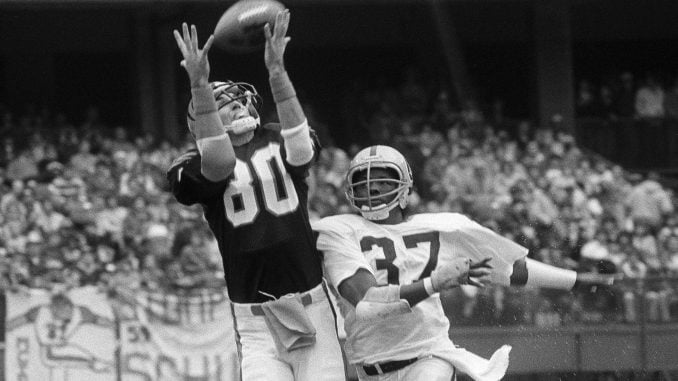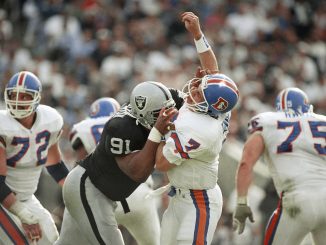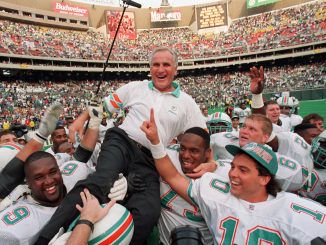
We’ve now gone more than a month with no sporting events in the United States due to the coronavirus pandemic. No one knows when we’ll get back to normal, with games every day.
With the viral outbreak depriving us of sports, it’s easy to look back with regret on all the times that sports leagues have voluntarily called off games because owners and players couldn’t come to an agreement.
While we can’t do anything about COVID-19 other than staying home and washing hands, we can do something to try to make up for the lost games and shortened seasons past.
In an ongoing series, while none of us have any live sports to watch, we’ll be un-canceling canceled games from history. We’ll do this not by any computer or video game simulations or by statistical tricks, but by actual action that took place on the field or ice. Basically, for each canceled game, we’ll use the next time those two teams played (at the same venue) as a “makeup game.” For example, we would use games from the 2020-21 NBA and NHL seasons to fill in any holes left by the coronavirus in this year’s schedule.
This week, we’ll look at the 1982 NFL strike.
A labor dispute caused the league to shut down in 1982 from Week 3 to Week 10. When the teams got back onto the field, they needed to find a way to make up for losing half the season. They took one game per team from the canceled weeks — mostly Week 3 — and created a Week 17 to give every team nine regular season games, with a relatively even home/road split.
Then the NFL drastically expanded the playoffs, adding five wild cards to the winners of the (then) three divisions in each conference, for a 16-team bracket.
The Redskins ended up beating the Dolphins in the Super Bowl in real life. Let’s see what happens when we make up the lost games.
AFC
The Dolphins, Bengals and Raiders led their respective divisions prior to our makeup games. At the time, normal NFL seasons had two wild cards in each conference who played each other on the first weekend of the playoffs to see who joined the three divisional winners the next week. Taking tiebreakers into account, that would have been the Steelers and Chargers.
Miami went 6-1 in the makeup games to wrap up the East. Out west, the Raiders did the same, earning home field throughout the playoffs at 14-2.

The Chargers went 4-3 to hold onto their Wild Card.
Meanwhile, the drama took place in the Central Division. Cincinnati went 2-5 to not only lose its divisional lead but drop out of the playoffs altogether. The Steelers leapfrogged the Bengals by going 4-3. Back in the East, the New York Jets went 5-2 to take the other Wild Card spot.
NFC
Washington led the East by two games prior to our makeup games. Green Bay had a half-game lead in the Central thanks to an early-season tie. In the West, Atlanta led by a game at 5-4. Dallas and Minnesota would have been the two wild cards.
Washington lost its momentum in the makeup games but still held onto the division lead with a 4-3 mark. Green Bay went 5-2 to run away with the Central by two and a half games. Atlanta and San Francisco finished tied atop the West with 8-8 records, but the Falcons won the head-to-head tiebreaker to win the division. The Cardinals went 5-2 to tie Dallas at 10-6 for the two wild card spots.

Playoffs
A quick note on the makeup games: Since NFL teams only play 16 games a year, it took a while to make up the lost games. We took the next game between the two teams in a canceled game, matching the home/road location. Four of the 98 makeup games took place in the 16-team postseason tournament that year. Another 52 took place the next season. Most of them were divisional games since divisional foes play each other twice a season.
The out-of-division games took a bit longer. Nineteen of the games took more than five years to make up. Seven took more than 10 years. Week 8’s Buffalo at Denver was replayed in 1995. Week 4’s Colts at Detroit wasn’t played until 1997. The final game — Raiders at Colts — was played in 2000, when both teams were playing in different cities.
We didn’t start making up playoff games until the two teams involved in the game were both done with their regular seasons. The AFC Championship Game was played in 2005, 23 years late.
The Chargers beat the Jets in the AFC Wild Card, then lost to the Raiders, who faced Miami in the AFC title game. The Dolphins won 33-21 to keep its spot in the “1982” Super Bowl.
In the NFC, the Cowboys beat the Cardinals, Redskins and Packers to advance to the Super Bowl. Dallas then beat the Dolphins 37‑20 to win the championship.
Draft
The 1982 standings also determined positioning for the 1983 draft, which had one of the best quarterback classes ever. The Colts were still in position to take John Elway first. Denver moved up two spots, from five to three, however, which would have likely changed their trade to acquire Elway. Dan Marino would have still ended up with the Dolphins, but the Patriots, not the Bills, would have been in position to take Jim Kelly.





